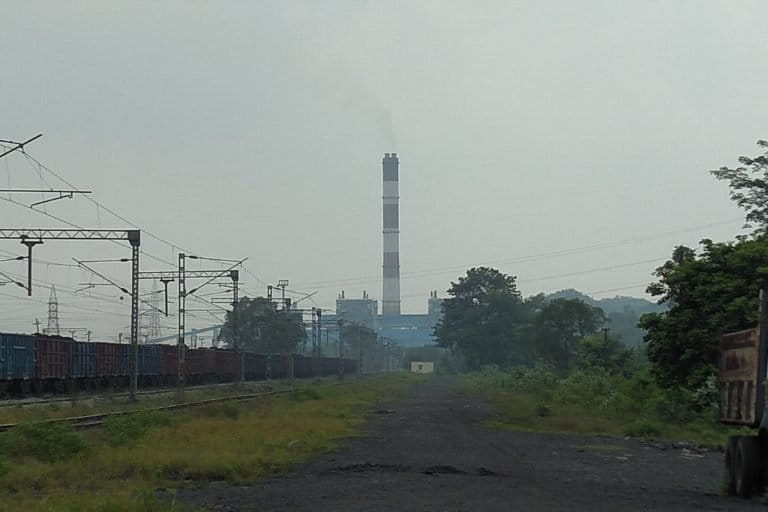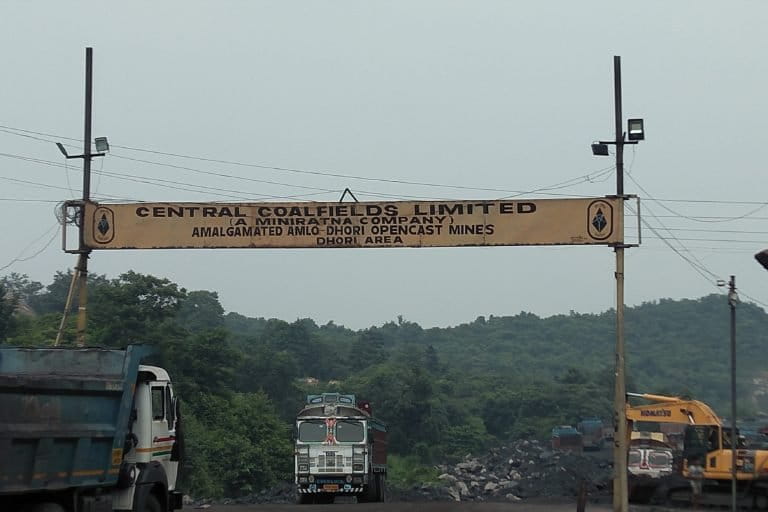- Damodar river was recently in the news for two reasons – pollution and floods in West Bengal. Chief Minister of West Bengal Mamta Banerjee wrote a letter to the prime minister terming the flood ‘man-made’ and held the power company Damodar Valley Corporation responsible for it.
- Damodar river is the lifeline of millions of people in Jharkhand and West Bengal. However, it is getting contaminated due to industrial discharge and urban sewage.
- The accumulation of silt in the DVC reservoirs is happening so fast that the dams will not be able to stop the severe floods after a decade, said a committee constituted by the centre.
The Damodar river, once known as the “sorrow of Bengal” for its frequent flooding, is still causing pain to millions of people dependent on it. The river was recently in the news for two reasons: India’s National Green Tribunal (NGT) imposed a fine of Rs 1.69 crore (Rs. 16.9 million) on Chandrapura unit of the energy company Damodar Valley Corporation (DVC), for polluting the river. Following that, the river was in the news during the recent West Bengal floods, in which half a dozen districts were flooded and state chief minister Mamta Banerjee wrote a letter to the prime minister of India blaming DVC for the floods. She termed the flood a human-made disaster and requested the prime minister to intervene.
Ironically, DVC came into existence for the very purpose of flood control. Before independence, Bengal used to witness frequent floods because of the Damodar River, leading to enormous destruction of property and loss of lives. In 1943, when Bengal drowned in another such flood and people were disgruntled, the government of Bengal appointed a board of enquiry which suggested creating an authority and also construction of dams and storage reservoirs to avoid any such situation in the future. In March 1948, the Damodar Valley Corporation Act was passed by the centre and with that, the DVC came into existence.
Though the frequency and intensity of floods has definitely reduced due to the dams, the “sorrow of Bengal” is still causing problems for the people residing nearby, but this time for a different reason – pollution.
History of pollution in Damodar River
Because of its cleanliness and purity at its origin point, the river is also called Devnad, particularly in Jharkhand. It flows across some of the most mineral rich regions of India which could be a boon for states like Jharkhand and West Bengal. But instead, the mining activities are a curse for the river and also for the people living near it.
The river flows through seven districts of Jharkhand – Lohardaga, Latehar, Ranchi, Chatra, Ramgarh, Bokaro, Dhanbad and five districts of West Bengal – Bankura, Purulia, Burdwan, Howrah and Hooghly, covering a length of 547 kilometres with 23,370.98 square kilometers of catchment area. The water pollution of the river has the potential to impact 25 million people.

The route of this river is known for its coal mines, coal washeries, thermal and hydro power plants, steel plants, fertilisers, cement and chemical factories. The discharge and waste from these factories and industries pollute the river severely.
In 1990, 200,000 litres of furnace oil spilled from Bokaro Steel limited into the river and reached Durgapur in West Bengal, which is around 150 kilometres from the origin. Officials noticed it only after four days and there are estimates that around five million people drank the contaminated water.
As recent as in 2019, furnace oil kept flowing in the river from Chandrapura thermal power plant for 41 hours. The convener of Damodar Bachao Andolan (DBA), an activism group that advocates for the protection of the river, Praveen Kumar Singh complained against the oil spill to the NGT which then imposed a fine of Rs. 6,4,08,000 on the thermal plant after finding it guilty in its inquiry.
The river also faces a menace of fly ash. On September 12, 2019, the fly ash pond of Bokaro Thermal Powerplant got ruptured and an obvious impact was on the river. A three-member committee found that the pond was neither constructed after due permission nor it was maintained as per the standards. NGT again imposed a fine of Rs. 2.89 crores (Rs. 28.9 million).
Since these are isolated incidents, the intensity of Damodar River pollution in general is not always clear. But there is much research which highlights the level of pollution in the river water even on normal days.
For example, a paper published in Journal of Bioremediation and Biodegradation in 2012 concluded that the river water is not potable (fit to drink) and also not suitable for taking bath. “People may be affected by various skin or intestinal diseases by taking bath in the river or by consuming without any treatment,” it had concluded.

Another research paper studying the impact of COVID-19 lockdown on water quality of Damodar River found, “Water Pollution Index (WPI) of pre-lockdown showed that around 100% samples are highly polluted. During lockdown a significant development has been noticed in the river water. WPI of lockdown showed that around 90.90% samples are of good and around 9.10% samples are of moderately polluted.”
Talking to Mongabay-India, Hirok Chaudhuri, Associate Professor, Center for Research on Environment and Water, National Institute of Technology, Durgapur said that Damodar river is extremely contaminated and quite unhealthy for human usage. He mentioned his ongoing research and said that in the upper catchment area near Singhbhum, there are uranium mines and there is a possibility of river water getting contaminated with radioactive substances. “Now, we are conducting research to find out the radioactive pollution of the river and unfortunately our fear seems to be getting true,” he said. His study is yet to be published.
His recently published research paper, which focuses on the part of the Damodar river flowing in West Bengal, gives an insight into the river’s pollution levels. It concluded, “The worst water quality in all (six) locations is due to high contamination of Total Coliform [bacteria].” For the study, the researchers had taken samples from six collection centres of Damodar river basin in West Bengal. They used data from 2003 to 2016 to reach their conclusion.
Read more: Environmental degradation in India’s oldest coal mining belt leaves locals gasping for relief
Recently, Sarayu Rai, a local leader who won the last assembly election against incumbent chief minister Raghubar Das, lodged a complaint with union steel minister RCP Singh that the Bokaro Steel Limited has backed out from its promise of zero discharge. Its waste-discharge is still flowing into the Damodar river. As per Rai, Bokaro Steel Limited has closed its one drainage in 2018 and promised to close the second one by 2019.
DVC’s role under question
DVC was primarily established for flood control and other subsidiary purposes like irrigation, power production etc. With passing time, it has emerged as a major power production company. In Damodar valley, DVC has seven thermal and two hydro power plants. Fly-ash coming out of thermal power plants is one of the major reasons for pollution on the Damodar River, says Sarayu Rai who is also president of DBA.
When the act came into existence in 1948, it was clearly mentioned that the DVC will punish polluters of Damodar River. Ironically, DVC itself is polluting the river these days, he adds.

Talking to Mongabay-India, Rai said that now DVC has agreed to stop the passage of its waste into the river and also to construct a sewage plant for the same. A tender was also passed but nobody knows what happened to that. Other than the industrial pollution, urban sewage flowing into the river is also emerging as a big challenge, he adds.
No data on health impact
Rakesh Kumar Singh, a trustee of LIFE, an organisation working on environmental issues also provides technical support to DBA, said that Damodar River is the lifeline of Jharkhand and it has a huge impact on the lives of local people in direct and indirect ways. River water is getting contaminated with fly ash, which is full of poisonous substances like heavy metals, he said. It is dangerous for human beings and cannot be cleaned with chlorine or bleaching powder.
Unfortunately, there is no study available on the impact of this contaminated water on local people, he adds, accusing the government for not getting health studies done on the same. “They are enjoying the benefit of people’s ignorance and poverty,” he accused.
Ashish Sheetal, secretary of Yugantar Bharati, another organisation working for environmental issues, echoed similar sentiments. He said that local people are forced to bear the brunt of pollution on their health and their economy.
How efficient is DVC in controlling floods?
This year, around half a dozen districts of West Bengal faced serious floods after incessant rain in mid-July and August. An agitated West Bengal CM, Mamta Banerjee wrote to Prime Minister Narendra Modi and made several serious allegations against DVC. She held DVC responsible for floods in West Bengal which led to death of 15 people and displacement of at least 3 lakh (300,000) people.
In the letter, Banerjee wrote that the flood control system through barrages and dams on both sides of West Bengal and Jharkhand is very old. Also, the water holding capacity of Damodar River has reduced due to siltation and lack of maintenance. The DVC, however, countered the CM’s allegation by saying that it releases water only with the consent of the state government. DVC also underlined a fact that Damodar Valley Reservoir Regulation Committee also has the state’s irrigation secretary as a member.
There is however a background to the allegations made by Mamata Banerjee on the DVC. An expert committee set up by the Ministry of Environment, Forest and Climate Change in 2013 had estimated that over Rs. 3,500 crore (Rs. 35 billion) would be needed for desilting of DVC’s Maithon and Panchet reservoirs. The expert committee said that the accumulation of silt in these reservoirs is happening so fast that both the dams will not be able to stop the severe floods after a decade.
The committee estimated that the amount of silt in Panchet is six times the prescribed rate and more than nine times in Maithon reservoirs. If siltation continues with the same intensity, in 10 years, Panchet will lose more than half of its water storage capacity and Maithon will lose more than two-thirds of its capacity. It would defeat the purpose of building large dams and the low-lying area of the Damodar Valley will again become prone to floods as the two main reservoirs will not be able to stop the flow of flood waters.
It is a coincidence that eight years after that report, the inflow of water from these two reservoirs caused floods in West Bengal. However, a former DVC official, who did not wish to be named, said that if the barrage is not opened, the situation will worsen due to the collapse of the dam. He claimed that a major reason for the lack of smooth drainage of water is illegal habitation at the drain point in West Bengal.
An email sent to the DVC from with questions related to river pollution and siltation has received no response at the time of publishing.
Mongabay-India also called the Chief Public Relation officer who said they would revert with the relevant information. At the time of publishing the story, a response had not yet been received.
Banner image: Damodar river flows across some of the most mineral-rich regions of India which could be a boon for states like Jharkhand and West Bengal. Photo by Rahul Singh.
